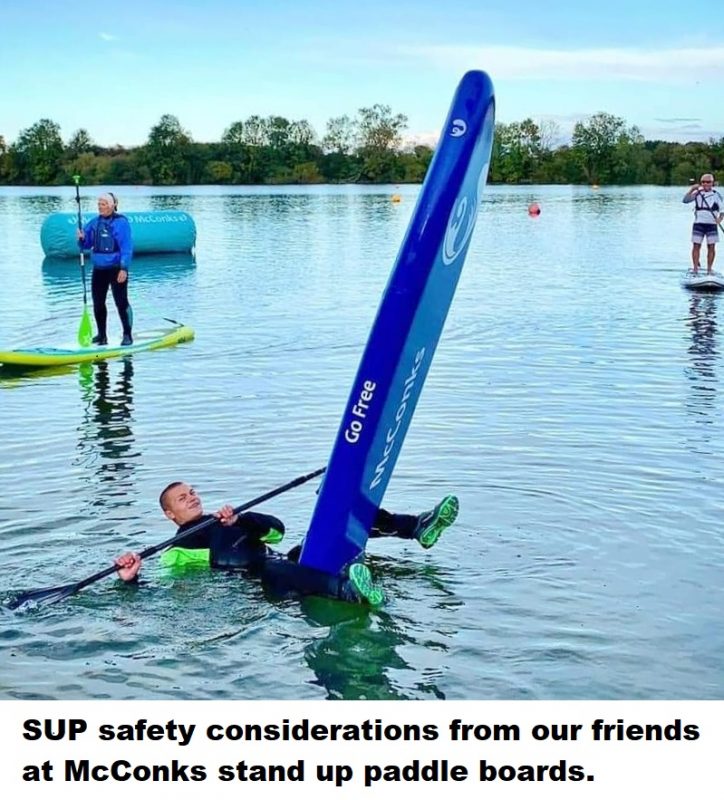Our friends McConks SUP are known for their educational, knowledge-based articles designed to raise awareness of key stand up paddle boarding aspects and help newbie paddlers progress efficiently and safely. We thought it worth getting team McConks to pen a guest post about stand up paddle boarding safety ahead of 2021’s new SUP season.
During 2020 a whole raft of brand new paddlers entered the SUP fold with many not having much (if any) prior watersports experience. With the COVID/staycation/furlough cocktail in full swing many wanted to maximise their enjoyment on home waters with stand up paddling being THE most popular activity to make best use of this.
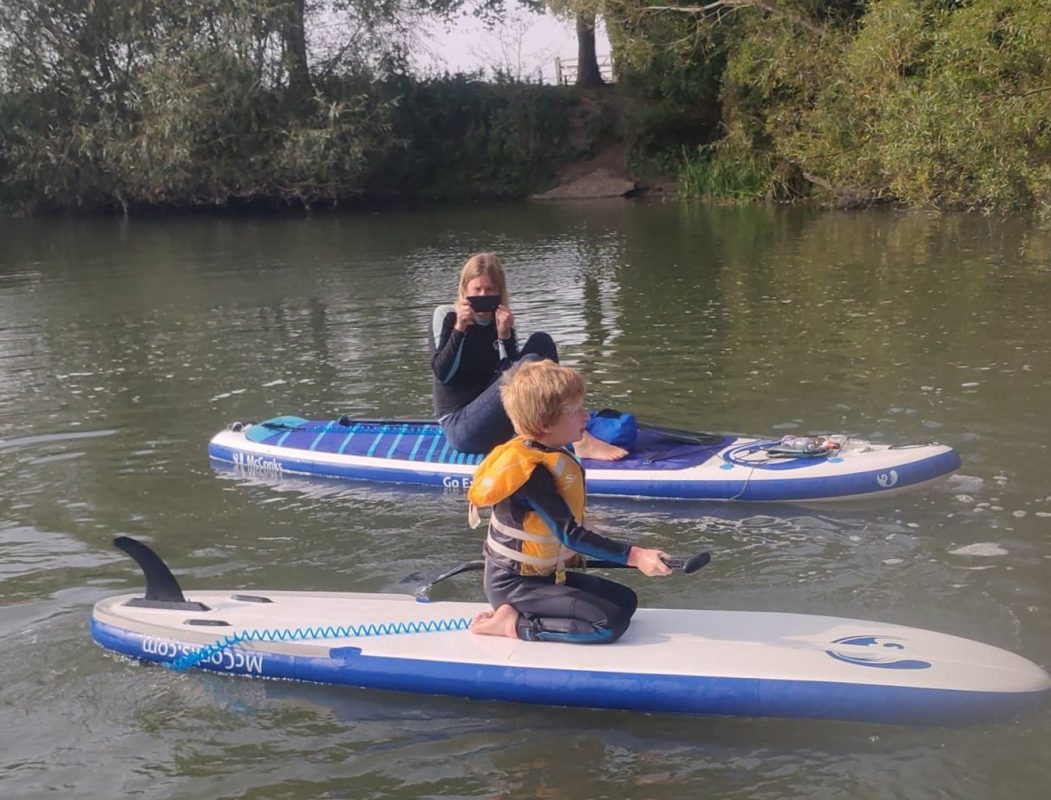
Stand up paddle boarding is (by and large) a mostly relaxed, mellow and safe pastime. As safe as you can be, at least, whilst floating about atop water. Without sounding like the fun police, however, every physical activity – especially watersport related – carries some degree of risk.
Unfortunately, there were a raft of incidents whereby newbie SUPers required emergency assistance. Everything from getting caught in rips, strong tides to being blown offshore. Accidents do, of course, happen but there’re always preventative measures you can take to avoid unnecessary mishaps. Without prior consideration and planning, combined with knowledge and understanding, a cropper you may come. Most paddlers got away unscathed, with just dented egos to massage. There was one incident where the end result was a fatality (not too far from NCW’s Cornish HQ) proving that sometimes when things go awry it can result in tragedy.
We’re not trying to unnecessarily alarm anyone with this info, merely help paddlers understand that prior thought is required BEFORE you go afloat. Then taking necessary steps to (as much as possible) prevent issues being the follow on.
Weather forecasts
Having an idea, at the very least, of what the day’s weather will likely bring is super important. If you’re not aware a gale might kick up during your planned SUP session then you’ll most likely get caught out.
It goes without saying there’re so many weather forecast tools available so use them. From specialist websites to the good old Met Office forecast – there’s really no excuse not to know before you go.
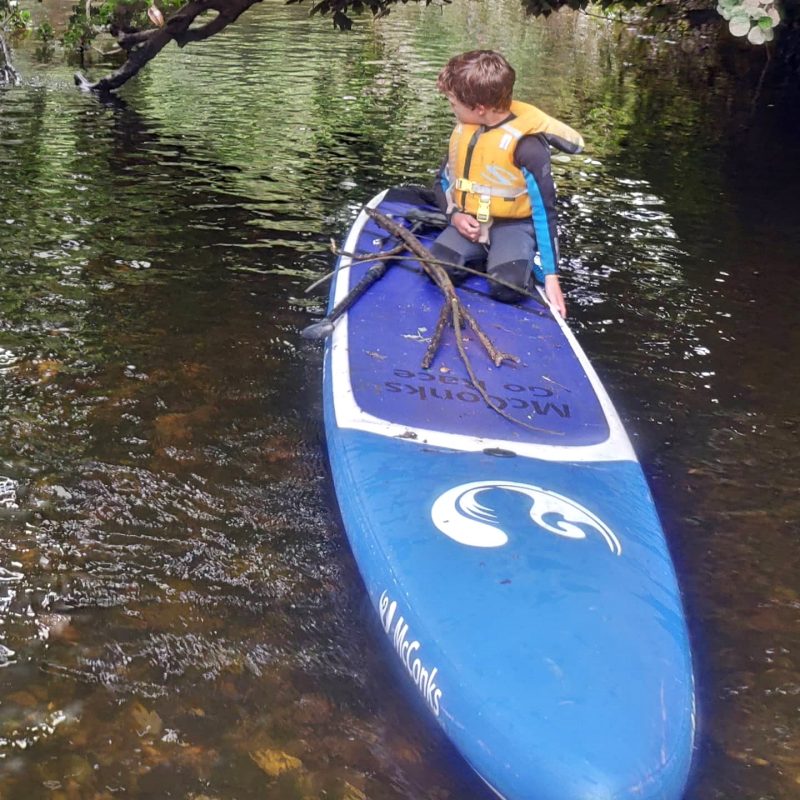
Tides
If you’re planned paddle session is coastal you’ll need to know the tide times. Some beaches can drastically alter their personality depending on how full or empty the tide is.
Tide timings are one thing but actually understanding how tides work in general is info you’d be wise to gen up on. The more you know the more informed your decisions will be.
SUP equipment pre-flight checks
Before going afloat you’d do well to check your gear over. Whether you use a hard shell stand up paddle board or inflatable version it doesn’t matter. Both types of SUP can sometimes incur damage. And as your primary means of floatation, it’s worth making sure the board’s integrity’s intact.
Your paddle also needs inspection. Checking the paddle shaft for cracks will mean any spotted reduces a broken means of propulsion, which can be prohibitive for getting back to shore if you’re not used to paddling under arm steam.
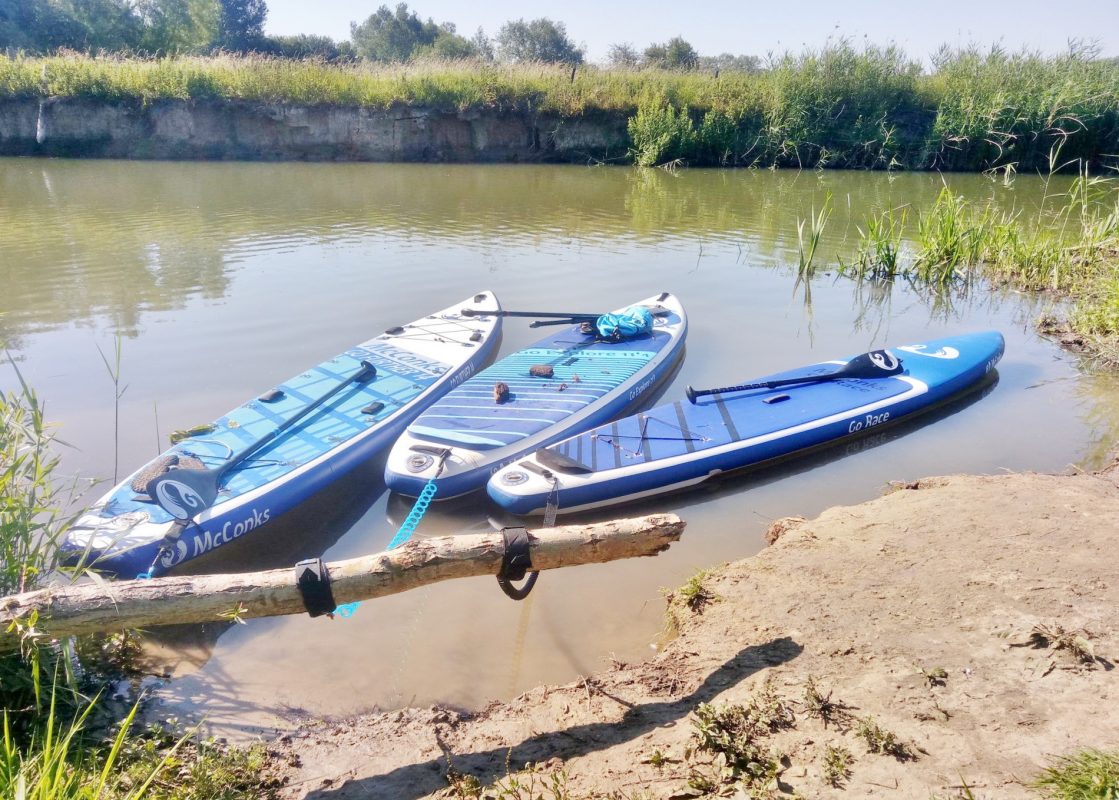
Give your fins a look/see as well and make sure they’re fitted correctly. Your fins failing will see loss of directional stability so worth inspection for sure.
Make sure your leash is fit for purpose, not worn out and the right kind. SUP leashes is a whole topic in itself as the wrong type in the wrong paddling environment can be life threatening. For most a coiled leash attached to a quick release waist belt is the best bet for flat water. Make sure you understand how the quick release mechanism works.
SUP water wear
Getting the right type of SUP wear sorted is actually quite tricky with the UK’s changeable climate. Whatever the time of year you’ll probably find at points you’re too warm while other periods will see you feeling the chill.
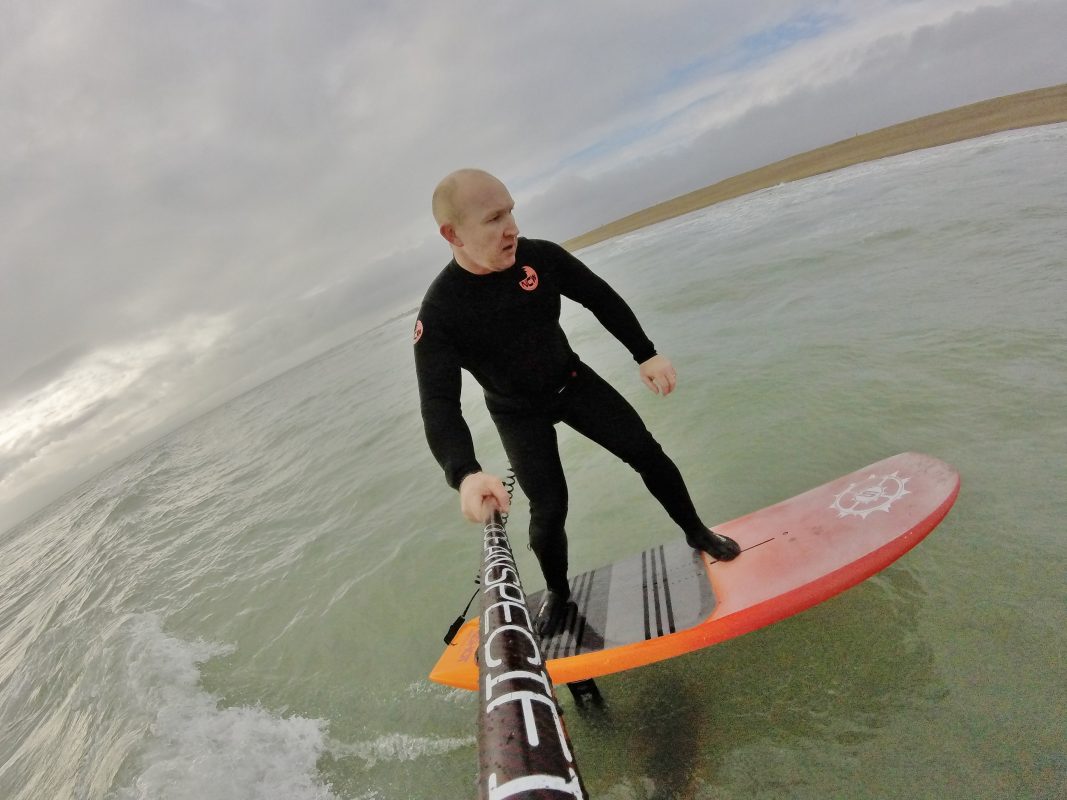
5/3mm chest zip Gulf Stream Yamamoto neoprene winter wetsuit (men).
Size: Large
North Coast Wetsuits Gulf Stream front entry / mini zip 5/3mm winter wetsuit steamer. Updated for the new season.
Want to read our fair returns policy first?A good quality wetsuit can be a good call during off season colder months. If you’re SUP surfing then this is definitely prefered. For flatter water, where you’re not taking as many dunkings, a layered system is great. Being able to remove garments or add them accordingly will see you SUPing as comfortably as possible. Having a waterproof drybag where you can stow gear not being used is worth it.
The above are just a few SUP safety considerations to keep in mind. Safety on the water is as much about common sense as anything. But education and knowledge plays their part. Learn as much as you can about stand up paddle boarding and you’ll be on to a winner.
For more information about McConks SUP head over to their site here – https://mcconks.com/

